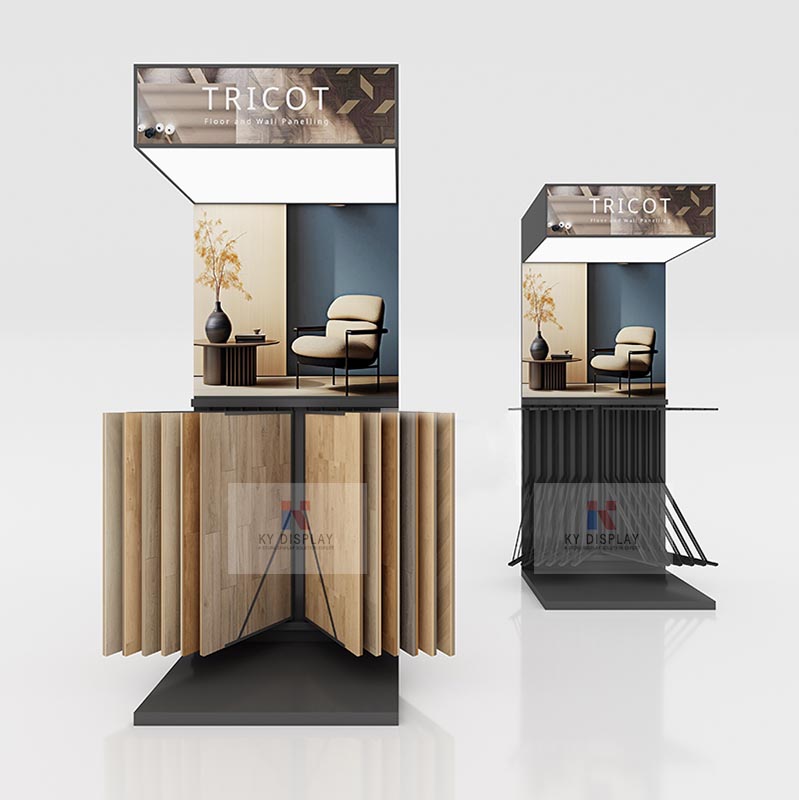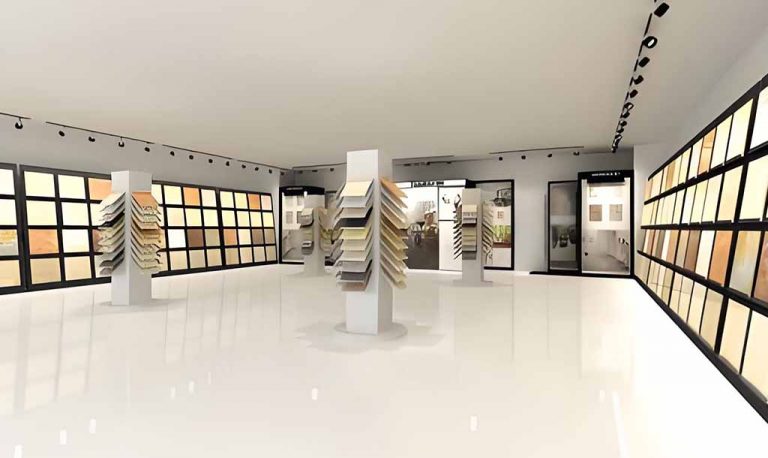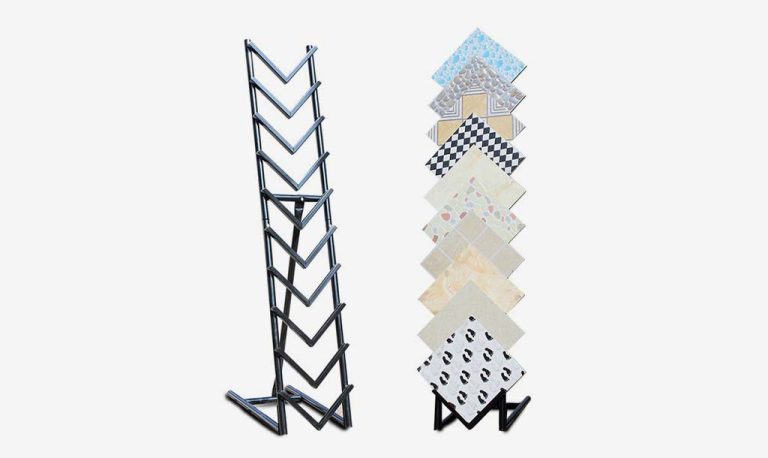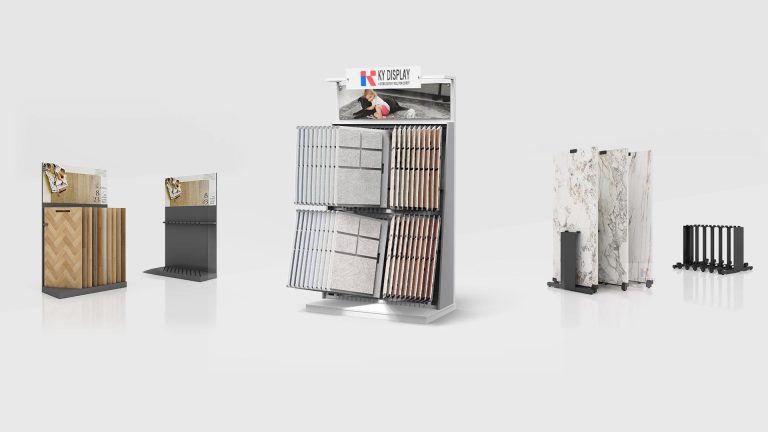A STONE DISPLAY SOLUTION EXPERT !

How to Design Efficient and Customer-Appealing Wooden Flooring Display Racks: Unveiling the Latest Trends!
Table of Contents

Wooden flooring is a pivotal element in interior design, and its presentation directly influences customer purchasing decisions. Display racks for wooden flooring are not merely sample holders; they significantly enhance customer experiences and boost sales conversions. This article offers an in-depth analysis from the perspective of seasoned industry professionals and target customers, exploring how to design practical and attractive wooden flooring display racks. It also addresses common pain points and unveils the latest design trends in the industry.
The Importance of Wooden Flooring Display Racks
In modern showrooms and retail spaces, wooden flooring display racks play an essential role. Industry experts agree that display design directly impacts customers’ first impressions of a product. A well-designed rack not only showcases the texture, grain, and color of the flooring but also guides customers to find the products that best meet their needs.
1. Enhancing Customer Experience
When selecting wooden flooring, customers typically focus on tones, textures, and durability. A great display rack design allows customers to see and feel samples more effectively. For instance, tiered racks highlight samples under various lighting conditions, and sliding designs bring samples closer for detailed inspection.
2. Maximizing Space Utilization
Retail spaces are often limited, but efficient display racks maximize the use of available space. Vertical arrangements and rotating racks are popular choices in the industry as they leverage vertical space while maintaining clear sample visibility.
3. Driving Sales Conversion
Studies indicate that well-designed racks can boost sales conversion rates by over 20%. Clear categorization and aesthetically appealing displays increase customer engagement and purchasing intent.
Addressing Target Customer Pain Points with Solutions
1. Low Display Efficiency and Poor Customer Engagement
Problem: Disorganized samples or uninspired designs diminish customer interest.
Solutions:
- Incorporate layered designs with categorized layouts for clear product comparisons.
- Integrate interactive features, such as sliding sample panels or adjustable lighting, to enhance the product’s appeal.
2. Inefficient Space Utilization
Problem: Poorly designed racks fail to make optimal use of showroom space.
Solutions:
- Use vertical tiered designs or rotating displays to capitalize on vertical space.
- Implement modular racks to adjust size and sample capacity based on needs.
3. High Maintenance Costs
Problem: Fragile materials and hard-to-clean structures increase operational expenses.
Solutions:
- Opt for durable, eco-friendly materials like metal frames and scratch-resistant finishes.
- Design racks with minimal gaps or complex structures, simplifying maintenance.
4. Difficulty in Customization
Problem: Standardized racks don’t accommodate diverse sample sizes.
Solutions:
- Offer fully customizable racks that fit various wooden flooring dimensions.
- Introduce expandable modules for effortless resizing or reconfiguration.
5. Lack of Branding Integration
Problem: Generic racks fail to strengthen brand identity.
Solutions:
- Create custom designs featuring brand colors and logos.
- Align rack aesthetics with showroom themes for a cohesive branding effect.
6. Challenges with Trends and Technology
Problem: Displays fail to incorporate modern features.
Solutions:
- Add smart features like electronic labels or LED screens for detailed product information.
- Enable QR codes or AR integration for virtual installation previews.
7. Logistics and Assembly Issues
Problem: Complex designs lead to high transportation and installation costs.
Solutions:
- Design collapsible, easy-to-assemble racks to minimize shipping volume and installation effort.
- Provide comprehensive assembly instructions or tutorials for convenience.
8. Price Sensitivity
Problem: Limited budgets prevent businesses from purchasing premium racks.
Solutions:
- Develop cost-effective standard racks balancing quality and functionality.
- Offer rental options, allowing small businesses to access premium designs at a lower cost.
Expert Recommendations for Display Rack Design
1. Focus on Modular Designs
Modular racks increase flexibility, adapting to diverse showroom layouts and easing updates when introducing new products.
2. Combine Aesthetics with Functionality
Pairing modern materials like metal with wood in display racks emphasizes sophistication for high-end wooden flooring, while natural wood designs reflect traditional craftsmanship.
3. Integrate Technology and Smart Features
Adding digital displays or electronic tags showcases essential details such as specifications and prices. Advanced features like AR enhance customer experiences by visualizing installation effects.
Future Outlook for Efficient Wooden Flooring Display Racks
The future of wooden flooring display rack design lies in modularity, interactivity, and sustainability. By integrating technological innovations and emphasizing eco-friendly practices, display racks will remain crucial in enhancing retail and showroom spaces.
For industry professionals, staying attuned to market dynamics and customer needs while incorporating smart technologies into rack designs is the most effective strategy for attracting customers and strengthening brand competitiveness.







